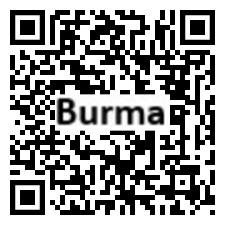Country Summary




Introduction
Background
Burma was a province of British India until 1937 and then a self-governing colony until independence in 1948. Military governments have generally led the country since. Recent years have seen a series of reforms leading to a substantial opening of the long-isolated country.
Geography
Area
total: 676,578 sq km
land: 653,508 sq km
water: 23,070 sq km
Climate
tropical monsoon; cloudy, rainy, hot, humid summers (southwest monsoon, June to September); less cloudy, scant rainfall, mild temperatures, lower humidity during winter (northeast monsoon, December to April)
Natural resources
petroleum, timber, tin, antimony, zinc, copper, tungsten, lead, coal, marble, limestone, precious stones, natural gas, hydropower, arable land
People and Society
Population
57,526,449 (2022 est.)
Ethnic groups
Burman (Bamar) 68%, Shan 9%, Karen 7%, Rakhine 4%, Chinese 3%, Indian 2%, Mon 2%, other 5%
Languages
Burmese (official)
Religions
Buddhist 87.9%, Christian 6.2%, Muslim 4.3%, Animist 0.8%, Hindu 0.5%, other 0.2%, none 0.1% (2014 est.)
Population growth rate
0.78% (2022 est.)
Government
Government type
parliamentary republic
Capital
name: Rangoon (aka Yangon, continues to be recognized as the primary Burmese capital by the US Government); Nay Pyi Taw is the administrative capital
Executive branch
chief of state: Prime Minister, State Administration Council (SAC) Chair, Sr. Gen. MIN AUNG HLAING (since 1 August 2021); note - MIN AUNG HLAING self-appointed himself to the role of prime minister of a “caretaker” provisional government that subsumed the SAC on 1 August 2021; the SAC, chaired by MIN AUNG HLAING, has served as the executive governing body since 2 February 2021, following the 1 February 2021 military takeover of the government and the declaration of a state of emergency and still exists under the provisional government according to state media
head of government: Prime Minister, State Administration Council (SAC) Chair, Sr. Gen. MIN AUNG HLAING (since 1 August 2021); MIN AUNG HLAING self-appointed himself to the role of prime minister of a “caretaker” provisional government that subsumed the SAC on 1 August 2021
Legislative branch
description: bicameral Assembly of the Union or Pyidaungsu consists of:
House of Nationalities or Amyotha Hluttaw, (224 seats; 168 members directly elected in single-seat constituencies by absolute majority vote with a second round if needed and 56 appointed by the military; members serve 5-year terms)
House of Representatives or Pyithu Hluttaw, (440 seats, currently 433; 330 members directly elected in single-seat constituencies by simple majority vote and 110 appointed by the military; members serve 5-year terms); note - on 1 February 2021, the military dissolved the Assembly of the Union; the State Administration Council (SAC) governs in place of the Assembly of the Union
Economy
Economic overview
prior to COVID-19 and the February 2021 military coup, massive declines in poverty, rapid economic growth, and improving social welfare; underdevelopment, climate change, and unequal investment threaten progress and sustainability planning; since coup, foreign assistance has ceased from most funding sources
Real GDP (purchasing power parity)
$247.24 billion (2020 est.)
Real GDP per capita
$4,500 (2020 est.)
Agricultural products
rice, sugar cane, beans, vegetables, milk, maize, poultry, groundnuts, fruit, plantains
Industries
agricultural processing; wood and wood products; copper, tin, tungsten, iron; cement, construction materials; pharmaceuticals; fertilizer; oil and natural gas; garments; jade and gems
Exports
$17.52 billion (2019 est.)
Exports - partners
China 24%, Thailand 24%, Japan 7%, Germany 5% (2019)
Exports - commodities
natural gas, clothing products, rice, copper, dried legumes (2019)
Imports
$17.36 billion (2019 est.)
Imports - partners
China 43%, Thailand 15%, Singapore 12%, Indonesia 5% (2019)
Imports - commodities
refined petroleum, broadcasting equipment, fabrics, motorcycles, packaged medicines (2019)
Exchange rates
kyats (MMK) per US dollar -
Page last updated: Wednesday, November 16, 2022
